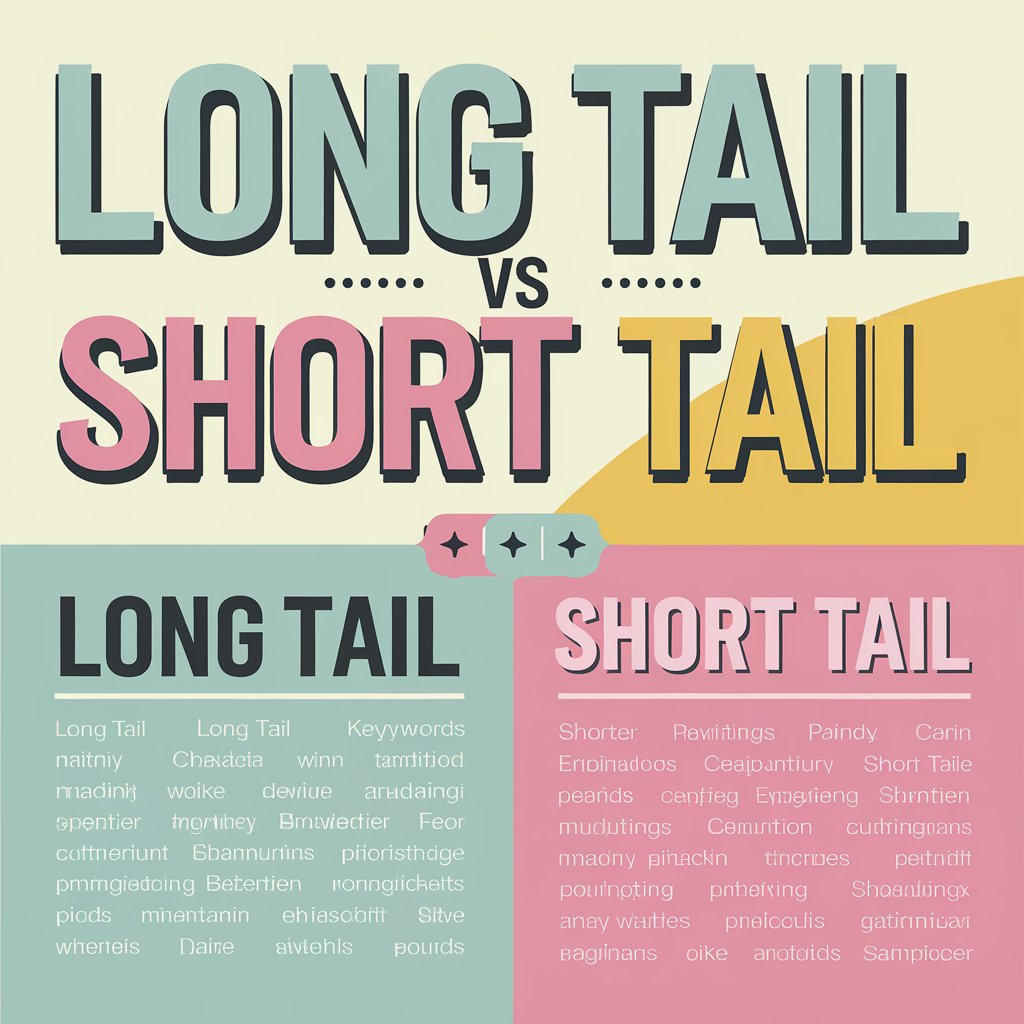What Are Keywords? Long-Tail vs Short-Tail Keywords Explained
In the realm of SEO, keywords are the backbone of a successful strategy, helping your content rank higher in search engine results. But what exactly are keywords, and how do long-tail vs short-tail keywords differ in driving traffic to your site? In this guide, we’ll break down the key elements of keyword strategy, helping you make the most of both types.

Table of Contents:
- What Are Keywords?
- Can Keywords Be Two Words?
- What Are Short-Tail Keywords?
- What Are Long-Tail Keywords?
- Long-Tail vs Short-Tail Keywords
- Long-Tail Keywords vs Short-Tail by Volume
- Long-Tail vs Fat-Head Keywords
- Conclusion
1. What Are Keywords?
Keywords, or key phrases, are the terms users type into search engines when looking for specific information. In SEO, incorporating these keywords into your website content helps search engines understand what the page is about, improving your chances of appearing in relevant search results. For instance, if you optimize for “best running shoes,” search engines can link that page to users searching for that exact term.
2. Can Keywords Be Two Words?
Yes, keywords can be two words or even longer. For example, “SEO services” or “running shoes” are two-word phrases that act as effective keywords. While single-word keywords can drive traffic, two or more words offer greater specificity, often increasing the chances of matching user intent.
3. What Are Short-Tail Keywords?
Short-tail keywords are general, broad search terms that usually consist of one to two words. Examples include “shoes,” “pizza,” or “phones.” These keywords tend to have a high search volume but are incredibly competitive. Ranking for a short-tail keyword requires significant SEO effort because the competition is fierce.
Short-tail keywords often attract a wide range of visitors, but since they’re less specific, they may lead to lower conversion rates compared to more targeted keywords.
4. What Are Long-Tail Keywords?
Long-tail keywords are longer, more specific phrases usually consisting of three or more words. Examples include “best pizza in New York” or “affordable running shoes for women.” Long-tail keywords typically have lower search volumes but are more targeted, making them easier to rank for. These keywords attract users with specific search intent, which often results in higher conversion rates.
5. Long-Tail vs Short-Tail Keywords
When comparing long-tail vs short-tail keywords, the main differences are in their specificity, search volume, and competition:
- Short-tail keywords (or “fat head” keywords) are broad, general terms like “watches” or “SEO,” which have high search volumes but intense competition. They cast a wide net and drive large amounts of traffic but are often less effective at converting visitors into customers due to their generic nature.
- Long-tail keywords are more specific, such as “SEO services for small businesses” or “best waterproof watches for hiking.” These keywords attract smaller, more targeted audiences but are easier to rank for and often result in higher conversions because they address specific user needs.

6. Long-Tail Keywords vs Short-Tail by Volume
A key distinction between long-tail keywords vs short-tail by volume lies in search frequency. Short-tail keywords tend to have high search volumes but come with stiff competition. For example, a keyword like “shoes” may get tens of thousands of searches per month, but ranking for it is extremely challenging. In contrast, long-tail keywords like “comfortable running shoes for flat feet” may have a lower search volume, but the chances of ranking for it are higher due to reduced competition.
7. Long-Tail vs Fat-Head Keywords
Fat-head keywords refer to short, highly competitive terms that dominate search engine results. The battle between long-tail vs fat-head keywords is a matter of specificity and competition. Fat-head keywords, while popular, are much harder to rank for, especially for new or smaller websites. Long-tail keywords, on the other hand, offer an opportunity to target niche audiences with less competition, making it easier for smaller businesses to rank.
8. Conclusion
Understanding the difference between long-tail vs short-tail keywords is essential for a balanced and effective SEO strategy. Short-tail keywords offer high traffic but intense competition and lower conversion rates. Long-tailed keywords, while attracting less traffic, are more focused and tend to convert better due to their specificity. The key to SEO success is incorporating a mix of both, optimizing for broader terms while targeting niche phrases to reach users at different stages of their search journey.
By doing so, you’ll ensure that your website not only attracts a wide audience but also engages with the users who are most likely to convert.
Contact Us:
-
Email: support@mycodelive.com
-
Visit: https://mycodelive.com/
